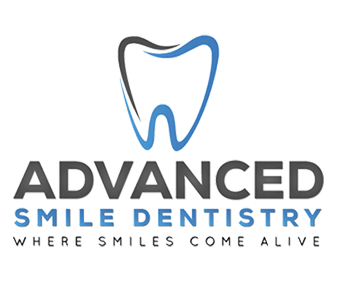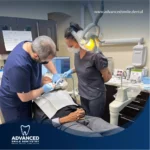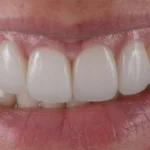How can I broken tooth pain relief

How can I prevent cracked tooth pain relief at home?
it’s essential to remember that these are not permanent solutions, and it’s crucial to consult with a dentist to address the underlying issue properly. Here are some steps you can take at home:
- Avoid chewing on the affected side: Try to minimize pressure on the cracked tooth by chewing on the opposite side of your mouth. This can help prevent further damage and reduce discomfort.
- Rinse with warm saltwater: Mix half a teaspoon of salt in 8 ounces of warm water and rinse your mouth gently. This can help keep the area clean and reduce inflammation.
- Over-the-counter pain relievers: Over-the-counter pain medications like ibuprofen or acetaminophen can help manage the pain temporarily. Follow the recommended dosage and instructions on the packaging.
- Avoid extreme temperatures and sweet foods: Hot, cold, or sweet foods can trigger sensitivity in the cracked tooth. Stick to room temperature foods and avoid sugary snacks.
- Dental wax: If the cracked tooth has a sharp edge that’s causing irritation, you can use dental wax (available at drugstores) to cover the area and protect your tongue and cheek from further harm.
- Clove oil: Some people find temporary relief by applying a small amount of clove oil to the cracked tooth. Clove oil contains eugenol, a natural anesthetic that can help numb the area. However, be cautious not to overuse it, as excessive application can cause irritation.
- Cold compress: If you experience swelling or discomfort, applying a cold compress to the affected area for 15-20 minutes can help reduce inflammation and numb the area slightly.
- Soft diet: Stick to soft, easy-to-chew foods to minimize stress on the cracked tooth.
Remember, these are just temporary measures to provide relief until you can visit a dentist. Cracked teeth require professional evaluation and treatment, as they won’t heal on their own. Seeing a dentist promptly is essential to prevent further damage and potential infection.
What are the causes of cracked toothache aches?
Cracked toothaches can occur due to various reasons, and they may lead to broken tooth pain or chipped tooth pain. Some common causes include:
- Trauma: A sudden impact or injury to the mouth, such as a fall, sports accident, or biting down on a hard object, can cause a cracked tooth.
- Chewing on hard objects: Regularly chewing on hard items like ice, pens, or hard candies can weaken the tooth’s structure and make it more prone to cracking.
- Large fillings: Teeth with large fillings are more susceptible to cracking, as the filling can weaken the tooth’s integrity over time.
- Grinding and clenching: Habitual teeth grinding (bruxism) or clenching, especially during sleep, can exert excessive pressure on the teeth, leading to cracks.
- Uneven bite: An improper bite can distribute forces unevenly, putting extra stress on certain teeth and increasing the risk of cracks.
- Age: As we age, teeth become more brittle and susceptible to cracks.
- Temperature changes: Frequent exposure to extreme temperature changes, such as eating hot foods and then drinking cold beverages, can cause the teeth to expand and contract, leading to cracks.
- Weakened enamel: Acidic foods and drinks, along with poor oral hygiene, can weaken the tooth enamel, making the tooth more vulnerable to cracks.
- Previous dental procedures: Teeth that have undergone extensive dental work, such as root canal treatment, may become weaker and more prone to cracking.
- Biting down with excessive force: Habits like nail-biting or using teeth to open packaging can lead to cracked teeth.
If you experience a cracked toothache or broken tooth pain, it’s crucial to seek dental attention promptly. Only a dentist can diagnose the extent of the crack and recommend appropriate broken tooth pain relief or chipped tooth pain management strategies, which may include dental bonding, dental crowns, root canal therapy, or in severe cases, extraction. Ignoring a cracked tooth can lead to further complications and potential infections.
Will my broken tooth eventually stop hurting?
It’s essential to remember that a broken tooth won’t heal on its own, and the pain is often an indication that something is wrong.
The nerve inside the tooth may be exposed or irritated, leading to discomfort or sensitivity. Additionally, a broken tooth can become more susceptible to infection and further damage if left untreated.
Is salt water good for Broken Tooth Pain Relief?
Saltwater rinses can be beneficial for toothache relief and promoting oral health. Saltwater has natural disinfectant properties that can help reduce bacteria and inflammation in the mouth, which may provide temporary relief for toothaches.
It’s important to note that while saltwater rinses can provide some relief for toothaches, they are not a substitute for professional dental care.
If you are experiencing persistent or severe toothache pain, it is essential to see a dentist to identify and treat the underlying cause.
How to use dental wax for broken tooth?
Using dental wax for a broken tooth can provide temporary relief and protection until you can visit a dentist for proper treatment.
Dental wax is a soft, pliable material that can be applied to the sharp edges of a broken tooth to create a barrier between the broken area and your cheek or tongue, reducing irritation and discomfort.
Here’s how you can use dental wax for a broken tooth:
- Clean the area: Make sure your hands are clean and wash your mouth gently with warm water to remove any food particles or debris around the broken tooth.
- Dry the tooth: Use a cotton swab or tissue to dry the broken tooth and the surrounding area. Dental wax adheres better to a dry surface.
- Cut a small piece of wax: Take a small amount of dental wax (usually supplied in small boxes or strips) and cut off a piece that is large enough to cover the broken edge of the tooth.
- Soften the wax: Dental wax can be a bit firm, so to make it more pliable, you can knead it between your fingers for a few seconds until it becomes soft and malleable.
- Apply the wax to the broken tooth: Gently press the softened dental wax onto the broken edge of the tooth, covering any sharp or jagged areas. Be careful not to push it too hard, as it should stay in place without causing additional discomfort.
- Shape the wax: Use your fingers or a clean, moistened cotton swab to shape the dental wax so that it conforms to the contours of your teeth and does not interfere with your bite or cause any discomfort.
- Check your bite: Gently bite down to ensure that the dental wax does not affect your natural bite and that it feels comfortable.
Remember, dental wax is only a temporary solution and should not be used as a long-term replacement for professional dental treatment.
How to fix a cracked tooth naturally?
-
Rinse with warm saltwater:
- Mix half a teaspoon of salt in 8 ounces of warm water.
- Gently rinse your mouth with this solution to help clean the area and reduce inflammation.
-
Over-the-counter pain relief:
- You can take over-the-counter pain relievers like ibuprofen or acetaminophen to help manage pain and reduce inflammation.
- Follow the recommended dosage on the packaging.
-
Dental wax:
- Dental wax or temporary filling material, available at most drugstores, can be used to cover sharp edges or fill small cracks temporarily.
- Be sure to clean the area before applying any material, and follow the product’s instructions.
-
Avoid certain foods:
- Avoid chewing on the side of the cracked tooth to prevent further damage.
- Also, stay away from very hot, cold, or sweet foods and drinks that may trigger sensitivity.
-
Maintain good oral hygiene:
- Continue brushing and flossing your teeth regularly but be gentle around the cracked tooth.
- Use a soft-bristle toothbrush to minimize irritation.
-
Ice pack:
- Applying a cold compress to the outside of your cheek for short periods (15-20 minutes at a time) may help reduce swelling and relieve pain.
-
Stay hydrated:
- Drinking water can help keep your mouth clean and reduce the risk of infection.
-
Dental appointment:
- Contact your dentist as soon as possible to prevent cracked tooth pain relief and schedule an appointment for a proper evaluation and treatment.





